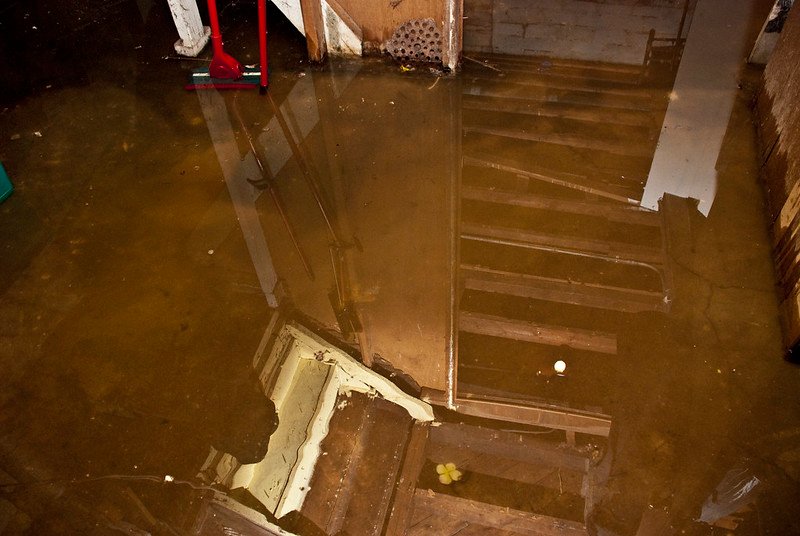Table of Contents Show
Spring rain is beneficial for your garden and lawn but can be a source of trouble if that water is leaking into your basement.
Whenever it rains, your basement faces the risk of flooding. Even light spring showers can cause basement floods, and rain can enter your home.

As the temperature outside rises, melting ice and snow can cause extra water to puddle in your gutters.
The excess water can drip from your downspouts and enter your home through weak spots in your foundation or cracks in mortar joints.
Severe floods might demand water damage restoration done by professionals, but there are some preventive things that you can do on your own. Read on to learn about them.
Keep Your Gutters Clean
When it’s raining outside, clogged gutters will overflow, and rainwater might pool up around your foundation. Removing debris and leaves is an excellent first step, especially when followed up with leaf guards’ installation.
Also, install downspout extenders that will direct water away from your home. Doing this will help prevent any soil around your home from getting saturated.
Well-made gutters should have at least one downspout for every 600 to 800 square feet of the roof surface and be kept clean. Otherwise, clogged drains will fill up, causing the water to overflow directly near the foundation.
It’s also essential to make sure the downspouts’ ends are extended so they can discharge at least four feet from the foundation.
Read Also:
Repair Window Wells
Windows allow light and air into your basement. But, heavy rains can cause water to collect within the window wells. The wise thing to do would be to replace your windows.
One easy way to reduce flooding is by installing a fitted window well cover that keeps your window wells free from leaves or other debris, which might cause your drain to clog.
This makes it possible for water to seep down into your basement.
Consider adding a window well cover to the top of the window wells. While doing this will prevent direct rainfall from getting in the well., it will also stop you from opening the basement windows for ventilation.
If you add window well covers, make sure they are well attached and sealed to the siding. Use a good quality caulk to the siding to drip between the good cap and the home
Do Some Flood-Proofing
Being the lowest part of a house, basements are prone to flooding e. If you live in a flood-prone area, one of the things you can do to waterproof your basement is to apply some flood control methods, such as raising your home on stilts, installing foundation vents or a sump pump, using coatings and sealants on your basement walls, and installing check valves on your pipes.
Protect Your Home from Water Seepage
Water can seep through cracks in your walls as well as other porous materials. Wall cracks can be either horizontal or vertical.
The former is more dangerous since it is caused by pressure against the walls. If you see stains on your basement walls or floors each time it rains, it’s an indication of water seepage.
Slope Soil to Shed Surface Water Away from The House
Ensure that the soil surrounding your home is pitched away from your home so that water can drain towards your yard instead of your foundation.
The soil should slope downward six inches over the first four feet from the foundation wall. After that, it can be graded more gradually, but never allow water to run back toward the house.
It is also important not to use landscape treatments that hold soil close to the house. A brick, stone, or timber landscape edging around flower beds close to foundation walls may look attractive.
But, these edges also prevent water from draining away from the foundation and increase your risk of basement flooding.
Improve Insulation
Choosing the proper insulation is not difficult, and it can make a ton of difference.
Condensation dripping from cold pipes can be a contributing factor to basement water problems. Cover cold water pipes with foam pipe insulation to stop condensation.
The foam insulation is not expensive, and you can easily cut it with scissors.
Also, insulate exterior walls to prevent condensation. In cold areas, insulating basement walls also saves energy and reduces your heating bill.
Do not cover the walls with insulation if the water is leaking in from outside; this will lead to a potential mold problem.
Plug Gaps
If you see water dribbling into the basement through cracks or gaps around plumbing pipes, plug the openings yourself using hydraulic cement or polyurethane caulk.
Plugs can help when the problem is simply a hole that water oozes through, either from surface runoff or wet soil.
But if the water is coming up through the floor or where the floor and walls meet, the problem is groundwater, and plugs won’t be enough.









